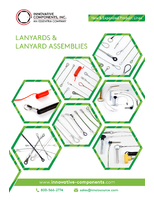Bridge Cradle System named as National Engineering Innovation finalist.
Press Release Summary:
Created by FIGG Bridge Engineers, cable-stayed bridge cradle system makes it possible to increase size of cable stays, realizing longer bridge spans that can be constructed efficiently. System also isolates strands in their own individual steel tubes, where they do not impact adjacent strands. Design was named one of two finalists of 2007 Charles Pankow Award for Innovation, presented by American Society of Civil Engineers' Civil Engineering forum for Innovation.
Original Press Release:
Bridging To The Future Of Engineering
New Cable-Stayed Bridge Cradle System Named National Engineering Innovation Finalist
Reston, Va.--What began during efforts to meet the public's expectations for a new landmark bridge in Toledo, Ohio, has now become nationally recognized as a revolutionary innovation in the design of cable-stayed bridges. Created by FIGG Bridge Engineers, the new cable-stayed bridge cradle system makes it possible to increase the size of cable stays, thus realizing longer bridge spans that can be constructed efficiently. The design was recently named one of two finalists of the 2007 Charles Pankow Award for Innovation, presented by the American Society of Civil Engineers' Civil Engineering forum for Innovation (ASCE/CEFI). This year's award winning project will be named at ASCE's 2007 Outstanding Projects and Leaders (OPAL) gala on Wednesday, April 25, 2007, at the Ronald Reagan Building and International Trade Center in Washington, D.C.
"The Pankow program recognizes projects for their transference of innovative design, materials, or construction-related research and development into sustainable practice," said ASCE President William F. Marcuson, Ph.D., P.E., Hon.M.ASCE. "The vision and forward thinking that went into making this new technology possible, and the impact it will have on the engineering community, makes it an exceptional example of everything the Pankow award embodies."
By allowing all strands to run parallel from the anchor at deck level through the cradle and back to deck level as primary tensile elements increases strength, the technology allows for longer, simpler and longer-lasting bridges, as well as bridges that are easier to inspect. The cable-stayed bridge cradle also isolates strands in their own individual steel tubes, where they do not impact adjacent strands.
This new technology opens the door to more economical and aesthetically pleasing pylon shapes, wider spacing of stays, simplified inspection and improved accessibility of strands, thereby extending the bridge's service life well beyond 150 years. The new design also lowers initial cost as a result of the reduction in construction materials and labor required, and incorporates removable 'reference' strands in each stay, which offer the best system verification of stay-cable condition for the future. Because the strands are not grouted, they may be removed one at a time, inspected and replaced, while traffic continues to utilize the bridge. Increased variety in pylon shapes also eliminates the need for unsightly blocks used for anchoring cables.
The system was initially developed for Ohio Department of Transportation's I-280 Veterans' Glass City Skyway and was also used in the design and construction of the Penobscot Narrows Bridge and Observatory in Maine, a project which was recently named a finalist for ASCE's 2007 Outstanding Civil Engineering Achievement Award, and which was featured in Popular Science magazine's "Best of What's New" issue. In addition, the new technology has been recognized by the Modern Marvels Invent Now! challenge. Out of 25 semi-finalists in the competition, the cable-stayed bridge cradle was one of only two civil engineering-related projects selected.
Created in 1996 by CEFI, the Pankow Award recognizes the contributions of organizations involved in a collaborative effort that demonstrates innovative design, materials, or construction-related research and development transferred into practice in a sustainable manner. The 2007 finalists also includes the performance-based seismic design of high-rise buildings, a methodology pioneered by Magnusson Klemencic Associates of Seattle to transforming the structural design of high-rise buildings in regions of high seismicity. Additional information on the Pankow and Michel awards can be found at: content.asce.org/cefi/HonorsandAwards.html.
Founded in 1852, the American Society of Civil Engineers represents more than 140,000 civil engineers worldwide and is America's oldest national engineering society. For more information, visit www.asce.org.




